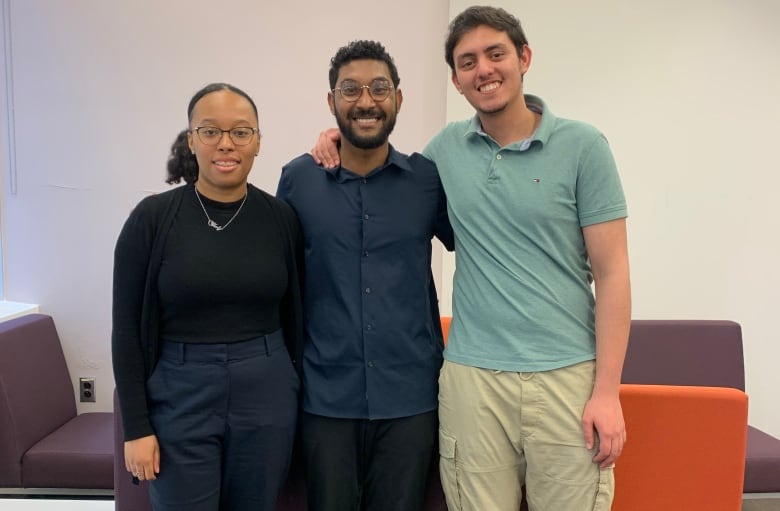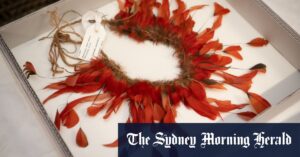
This First Person article is the experience of Samuel Bonne, a medical student in Montreal. For more information about CBC’s First Person stories, please see the FAQ.
Warning: this article includes descriptions from a human anatomy lab.
Walking into the anatomy lab for the first time, I felt as if I were stepping through a gateway that bridged the bustling world of the living with a sacred, quiet realm where life and death met in intimate closeness.
Despite my diligent study efforts, nothing had truly readied me for the moment we approached the body bag. These silent mentors laid out before us were more than just subjects for our learning.
As I looked around at my peers, a surge of responsibility washed over me, prompting me to propose, “Y’all mind if we observe a minute of silence before we begin?”
My voice, tinged with a mix of nervousness and resolve, seemed to resonate with them and many nodded in solemn agreement. I closed my eyes, offering a silent prayer not only for the guidance and strength to honour this individual’s ultimate gift of donating their body for use in our studies, but also for them to find a personal sense of peace.
My thoughts drifted to my grandpa, whose death from COVID-19 had left a profound void in my heart. The restrictions of the pandemic had cruelly barred me from attending his funeral, leaving me without a traditional avenue for closure. It wasn’t until I sat in the haunting stillness of his empty room months later that I began to process my grief and find a semblance of peace.

This moment of silence in the lab, honouring another’s life, echoed that personal journey of loss, bridging my past experience with the present task at hand. It reminded me that the cadaver before us was not just an anonymous donor but someone’s loved one, whose legacy was now intertwined with my own story of mourning and acceptance.
The silence was abruptly ended by the mechanical hiss of the hydraulic lever as the table on which the body lay began to rise, jolting us back to the task before us. As the scent of formalin used to preserve the cadaver filled the air, I reached out hesitantly to slowly unzip the bag and reveal the person who had made this profound donation.
My classmate’s voice grounded us back to our purpose. “Who wants to make the first cut?”
I was acutely aware of the paradox of our task. Here we were learning to heal the living by studying the dead. This act was a stark reminder of my mortality and the preciousness of life. It forced me to confront my feelings about death — not as an abstract concept, but as a tangible, inevitable part of life.
A grim discovery
The lungs were marred by blackened spots — a tapestry of malignant growths spread across the different lobes. The stark reality of metastatic lung cancer lay before us, its presence confirmed by the brief notes on the cause of death.
As a former smoker, I felt connected to this grim future that could have been mine. The tar-stained tissues seemed like a malevolent entity claiming its territory. A shiver ran down my spine as I considered the power of this visual lesson.
If young Sam had seen this, he would have never touched a cigarette.
My thoughts spiralled, painting imagined scenarios of the donor’s life. I pictured them in the throes of casual habits: a cigarette shared with co-workers during a break, the ritual of unwinding with whisky on the rocks after a long day. Perhaps these moments seemed harmless or the risks distant and abstract to them. I imagined the creeping onset of symptoms, the chilling finality of a CT scan and the life-altering weight of a diagnosis delivered in a sterile room.
Closing or closure?
As we concluded our dissection, carefully restoring the cadaver to a semblance of wholeness, I felt a profound sense of gratitude and responsibility. This experience was more than just a lesson in human anatomy. It was a deep philosophical journey into the nature of existence. It was a reminder that we, too, shall die and of the importance of living a life that’s true to our values and meaningful to others.
Stepping out into the sunlight after that first day in the anatomy lab, I wasn’t the same person who entered it. That night, as the scent of formalin haunted my dreams, I found myself wrestling with big questions about life, death and what it means to truly live.
In sharing these reflections with my classmates the next day, I realized we were all undergoing a similar journey. Together, we had stepped into the lab as students, but we emerged as philosophers, grappling with the timeless questions of what it means to live a good life and face death with dignity.
Do you have a compelling personal story that can bring understanding or help others? We want to hear from you. Here’s more info on how to pitch to us.


